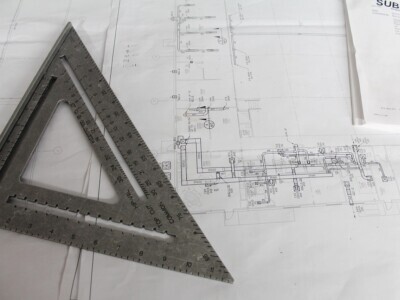Over the years I have worked with teams that had great project management and others that had poor project management. The projects with really good project management generally ran smoothly with less stress, allowing the team to be more productive.
A Few of the Characteristics of a Well-Managed ERP Project
I have noticed a few consistent elements in well-managed projects. Those elements can be summed up in the following list:
- The project manager produces a published project plan with tasks, timelines, deliverables, milestones, and checkpoints.
- The project plan was at sufficient detail to manage the rolled up tasks, but not so detailed that the individual tasks were micromanaged.
- Team leads had individual responsibility at a deliverables level.
- The deliverables were constructed at the detailed task level so that their progress could be reported to the rolled up project task.
- The project manager knew ahead of time what was coming in the next major phase and communicated that to the whole project team ahead of time, and at the transition times to the next phase.
- The tools or deliverables templates, resources, and tracking mechanisms were defined ahead of time, and then presented to the whole project team with explanations on what information was needed and how to use the tools (JIT or Just In Time).
- Team leads held regular weekly status and progress meetings on deliverables status which they then regularly reported to the project manager and directly tied into the rolled-up project tasks.
- There were several scheduled proof of concepts/prototypes/demos of functionality long before a solution went to testing.
This list is fairly generic and can be applied to just about any project. Many, if not all, of these items may seem to be common sense, but you would be shocked at how many projects deviate from these basic principles.
SAP Prototyping, Proof of Concepts, Functionality Demonstrations, or Playback Sessions
The last item (the numerous proof of concept reviews, prototypes, or functionality demonstrations) is critical. If these prototyping sessions are properly scheduled (early and often), they quickly reveal the following:
- Consultants who might be better on your competitor’s project(s)
- Areas for genuine business value-add or ROI that might require a scope adjustment
- Capture and correction of process gaps before integration testing
- Adjustment to process focus through better articulation of business need after seeing what functionality is there
- Identification of gaps and risks in application functionality
- Whether your outside project manager can coordinate the necessary workstreams to accomplish the proof of concept sessions
- Any early warning signs of performance problems
By insisting that your first proof of concept or prototype session occur right at the end of blueprint, you have sufficient time to make any necessary staffing adjustments.
Warning Signs to Be Aware of in Prototyping
The first warning sign is if a prototyping session or timeline is missed without a clear justification. Unless the delay was due to procurement, logistics, or security issues outside of the project manager’s control, you should view this with suspicion.
If SAP or ERP application problems are causing the delay, you may want to take a hard look at any consultants who are responsible for installing and maintaining the various software applications.
Another warning sign is if the prototyping sessions are chaotic and disjointed. Usually this will fall into two categories: a) the project manager is not as experienced as you might need, and therefore might be better off working for your competitor(s), or b) the project timeline might be too tight to do the prototyping in a proper manner.
How can you tell the difference? You need to consider a lot of aspects, but here are a few:
- Is the problem because one key process area is not ready?
- Is the dependent process, or process bottleneck, too complex for the time frame?
- Would a few more days make a significant difference in the readiness, coordination, and execution of the prototype/demo?
- If the team only needs a small time adjustment, and you see clear results from just a few days, the timeline might be a little too tight.
- If a short delay does not produce a significant improvement, then you may have a project management or a consultant problem that needs to be addressed.
To gain additional insight on this critical stage of the project, especially in the beginning when a properly formed foundation is critical, please see the post entitled “Breakthrough Project Success: Part 4 of 4, Last Low Risk Chance for Results.”






